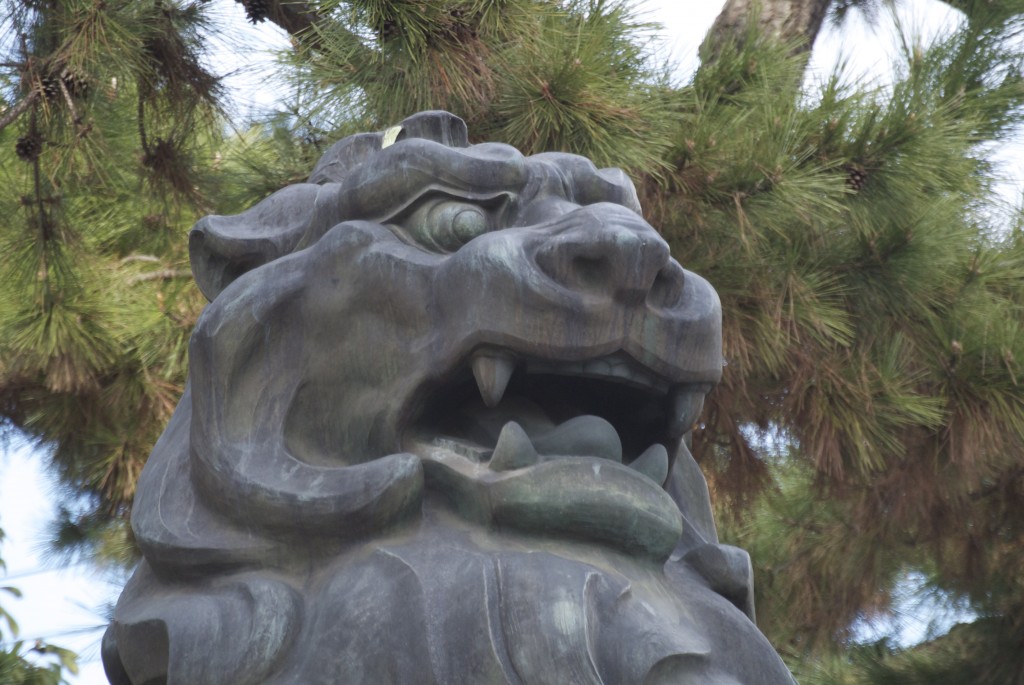
The fearsome komainu at the entrance torii. If you were an evil spirit, would you dare to enter?
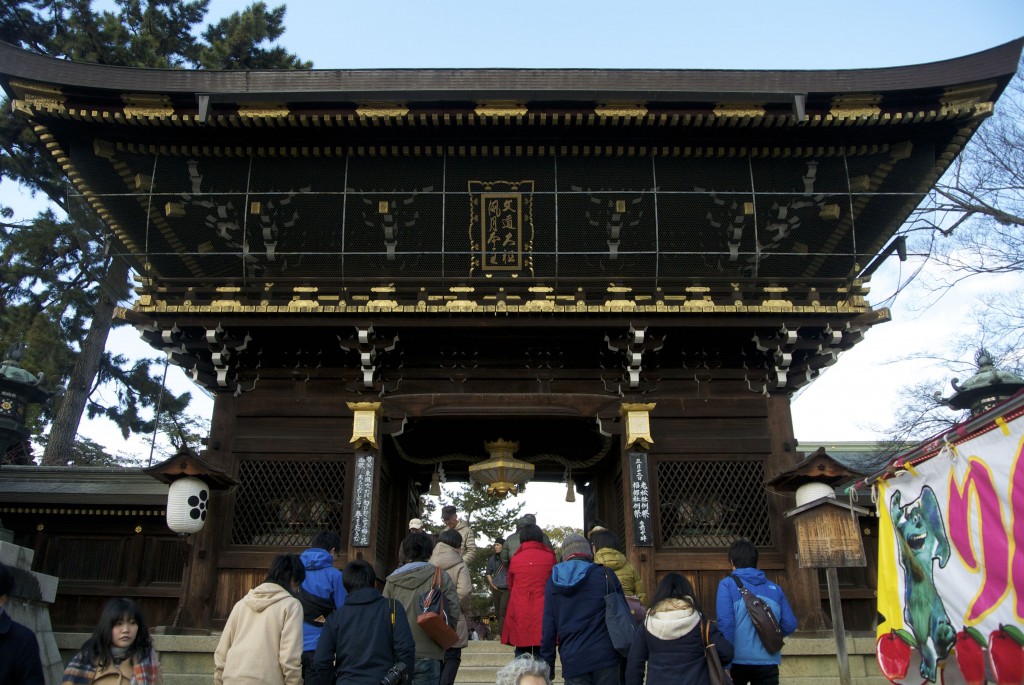
Entering into the inner precincts through the Chuumon (Middle Gate)
Kitano Tenmangu has spacious grounds, though in the past they were much more expansive and enveloped a large Shinto-Buddhist complex of shrines and temples. Look to the left as you walk along the long entrance path and you’ll see a temple that was once an integral part of the complex, and in the shrine’s museum the prized possession is the Kitano mandala.
It’s a reminder of the long tradition of syncretism, and that those responsible for pacifying the spirit of Sugawara no Michizane were actually Budhhist priests. These were associated with the Heian aristocracy and anxious to please the rulers by exorcising the angry spirit of Michizane and turning him into the kami of the sky, Tenjin. Not a lot of people are aware of the history, and such is the success of the Meiji enforced split between the religions that contemporary Japanese automatically assume the process leading to deification must have been entirely ‘Shinto’.
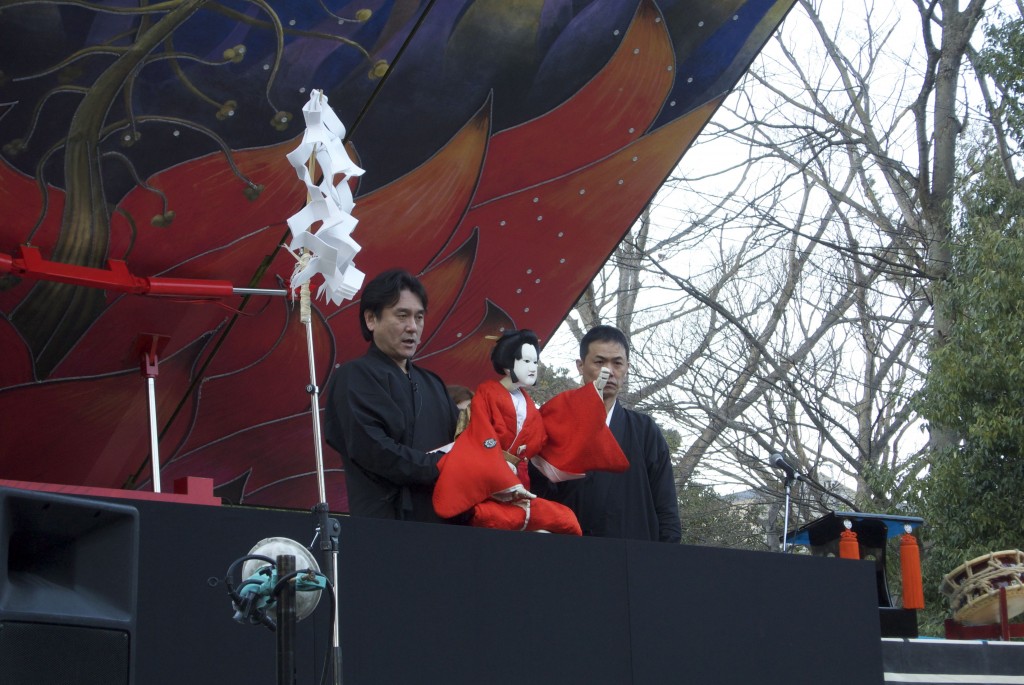
A performance of Edo-era puppet theatre in the grounds, part of the shrine's association with the arts
The most striking feature of the architecture is the combinatory Haiden (Worship Hall) and Honden (Sanctuary) under one cypress-bark roof, built in 1607. Look at the picture below this text in which people are queuing, and you’ll notice at the top the gorgeous decorations adorning the otherwise plain wood. They are typical of the sumptuous Azuchi-Momoyama period, and the buildings were even given lacquered floors (the Haiden no longer has its, though the Honden does).
Along the front of the Worship Hall runs a series of good fortune animals, including a tiger (for strength), a baku (for eating bad dreams), a kirin (for prosperity or serenity) and, improbably, a unicorn (for goodness). To either side of the building, unusually, are music chambers, another indication of the lavish treatment and artistic connections of the shrine.
Sugawara no Michizane was a man of many accomplishments, who wrote poetry and was versed in calligraphy. He was an exceptional scholar too. The shrine is therefore associated with literary accomplishments as well as academic endeavour. There are often displays of traditional and contemporary arts, but the most striking aspect of Michizane’s legacy is undoubtedly the masses of ema hung up by schoolkids and students in the hope of persuading Tenjin to help them pass their exams.
The throng of ema tucked into one area of the grounds is testimony to how the tradition still thrives in modern times. The number of ema is almost overwhelming, but of greater interest perhaps is the open-sided ema-dokoro building in which ancient ema are displayed. These large wooden paintings have themes related to the shrine in one form or another and thought to be pleasing to the kami. It’s the best collection I’ve seen and one that indicates how precious these votive plaques once were as offerings.
***********************************************************************
Tenjin-san is the popular name of the monthly flea market held at Kitano Tenmangu. Held on the 25th of every month, it’s a bustling, popular and lively affair with many bargains for those seeking Japanese paraphernalia. Information for this and the previous posting Kitano 1): plums and oxen is taken from Shinto Shrines: A Guide to the Sacred Sites of Japan’s Ancient Religion published by Univ. of Hawaii Press in 2013.
*************************************************************************
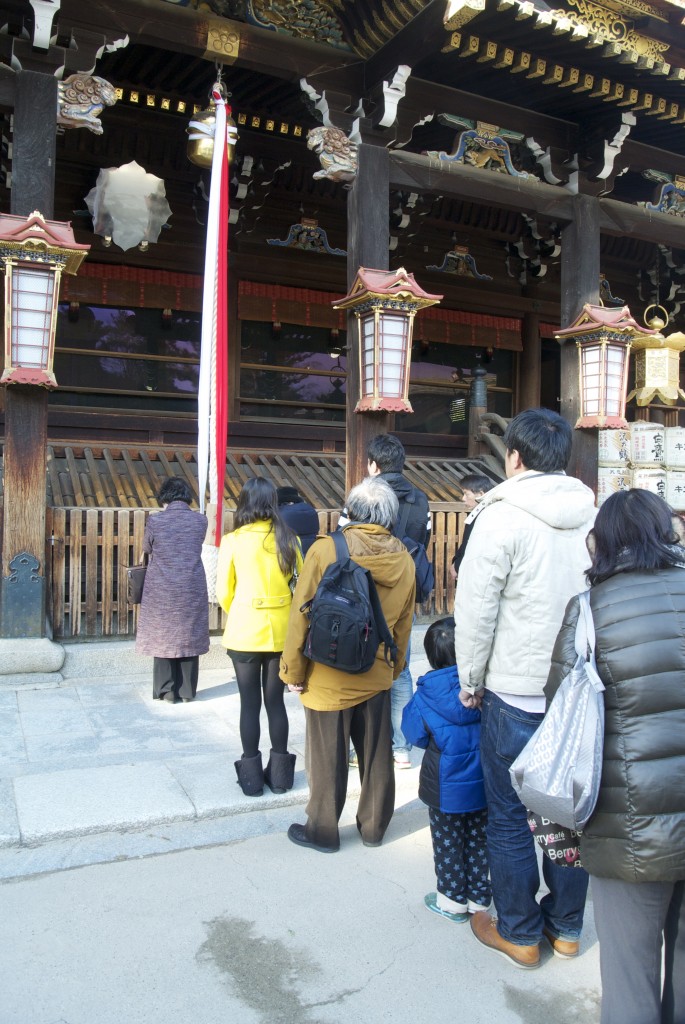
Queuing to pay respects at the Haiden (Worship Hall). Note the gold finishing and painted decorations at the top as well as the most unusually shaped mirror.
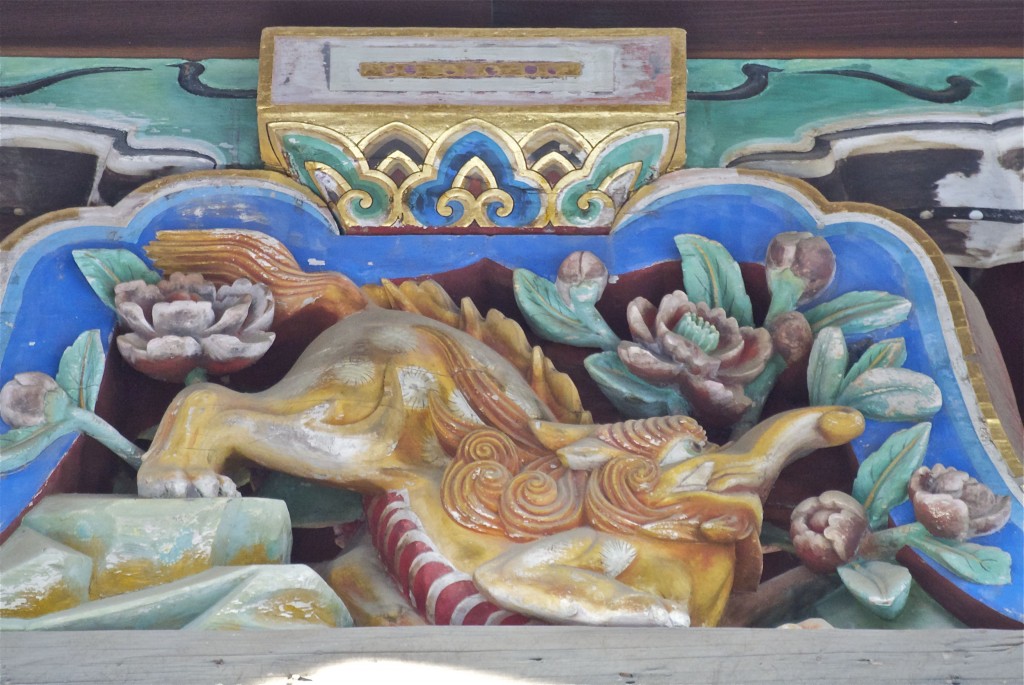
Haiden detail: the mythical bad-dream eating baku
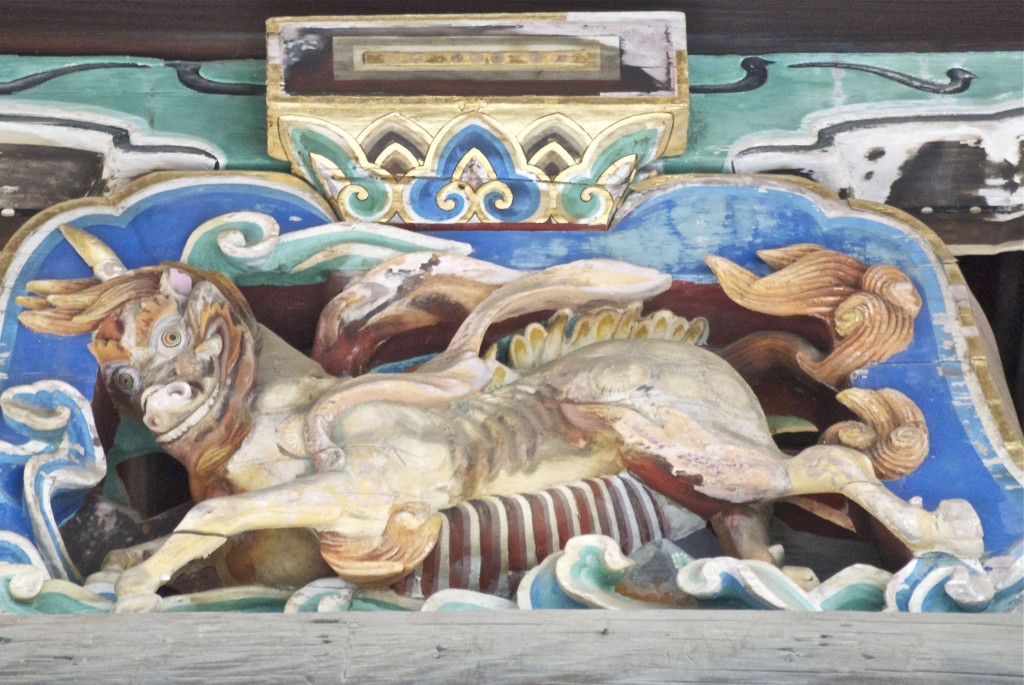
Haiden detail: the mythical unicorn
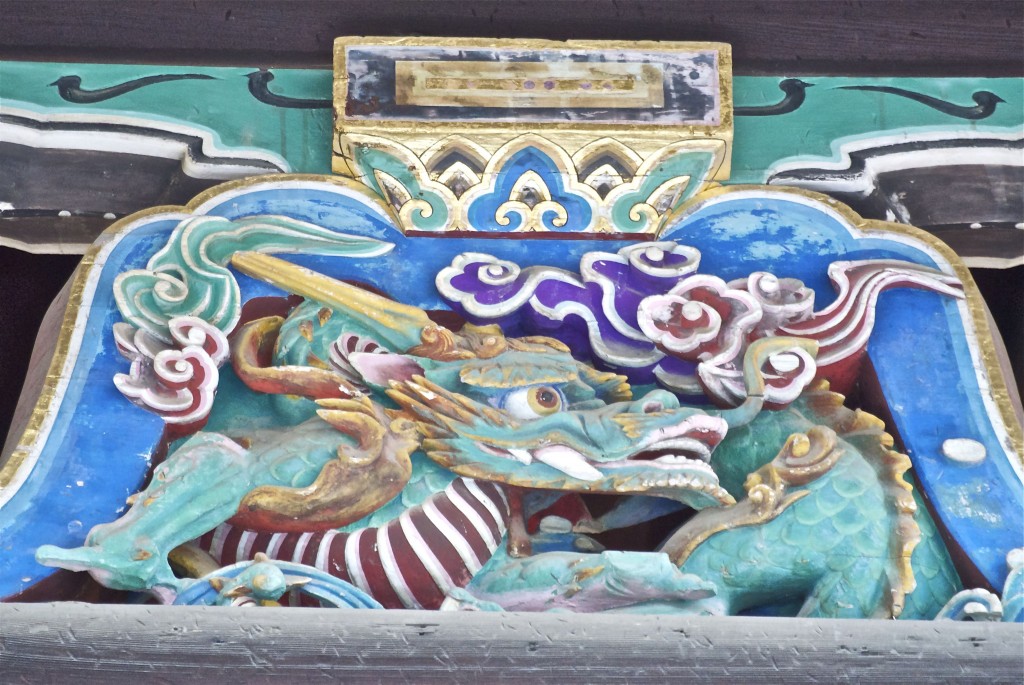
Haiden detail: the dragon
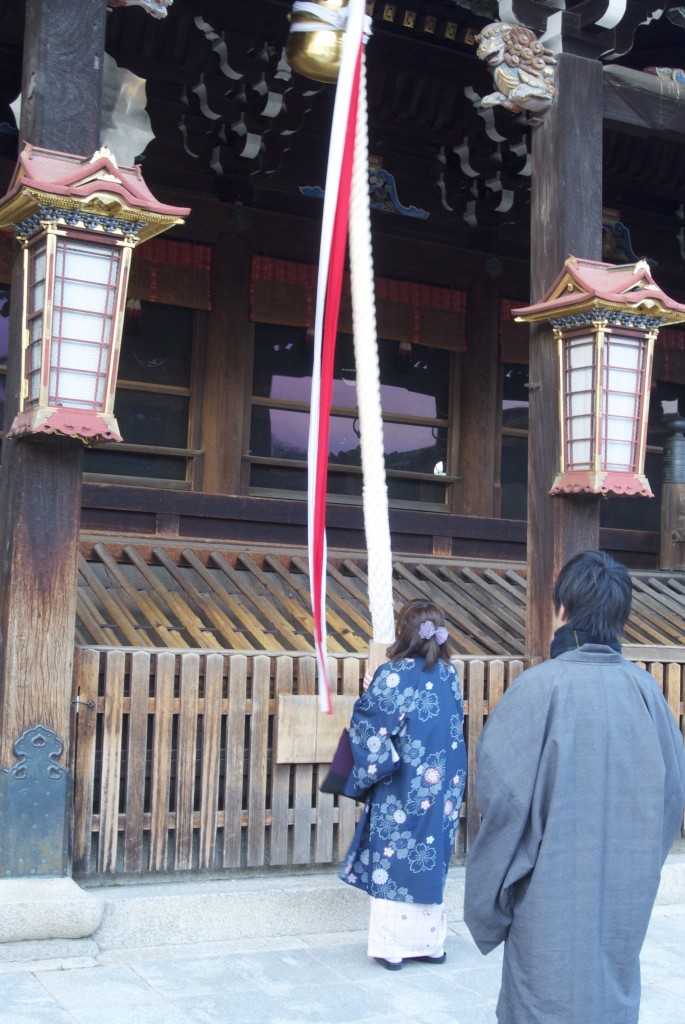
All dressed up to ring the bell before praying – with someone special in mind?
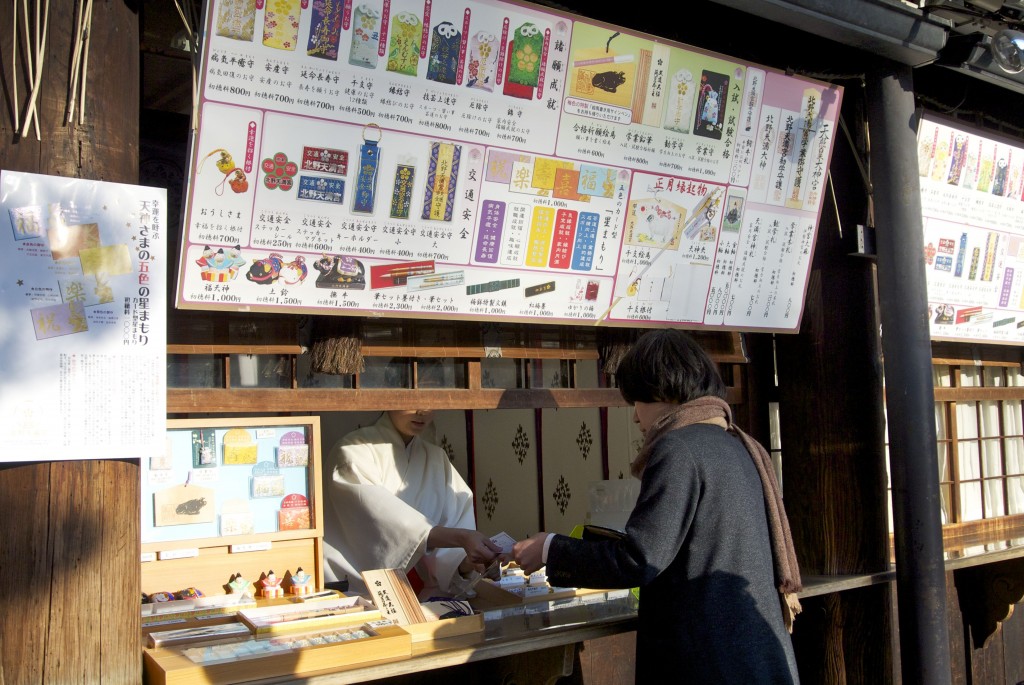
The shrine office does a brisk trade in ema and omamori, the descriptions of which are helpfully displayed on a board above the payment window.
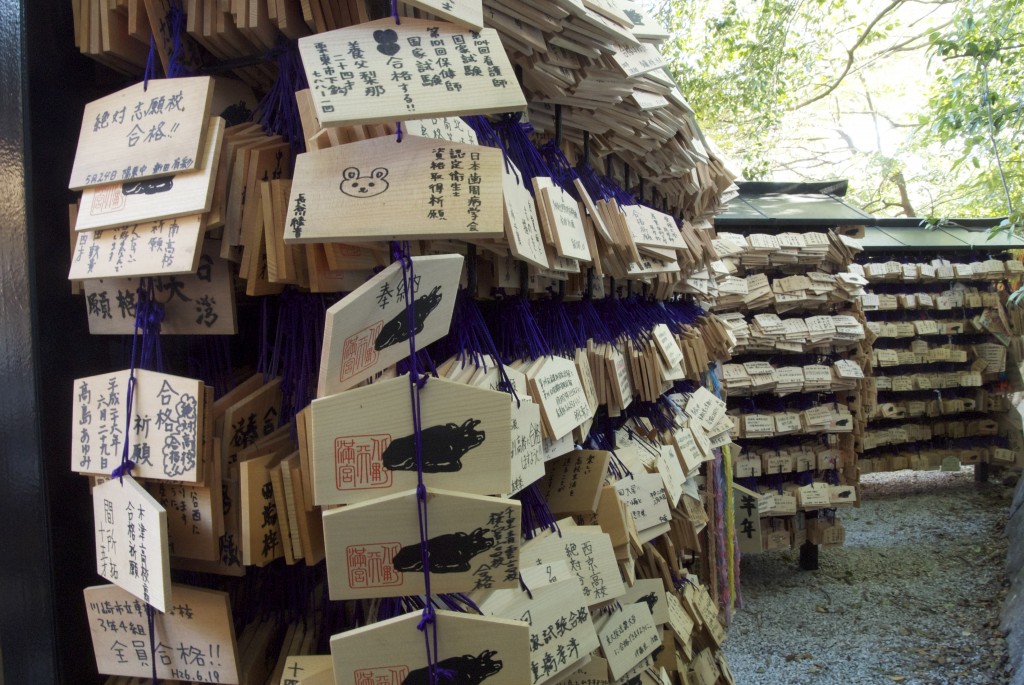
Most of the ema display the reclining ox associated with Michizane, though some people like to add their own touch of artistry. The banks and banks of ema attest to the popularity of Michizane with schoolchildren wanting to pass exams.
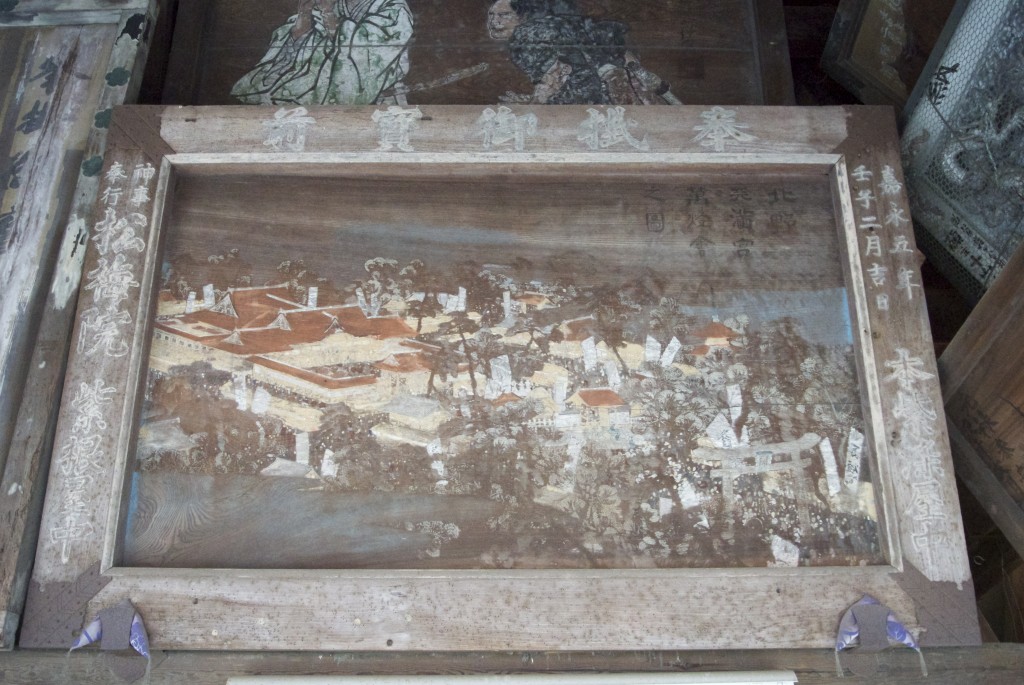
The Ema Hall has a collection of ancient ema which were donated to the shrine in times past. Many are faded now, but this one gives an indication of how big the Shinto-buddhist complex used to be.
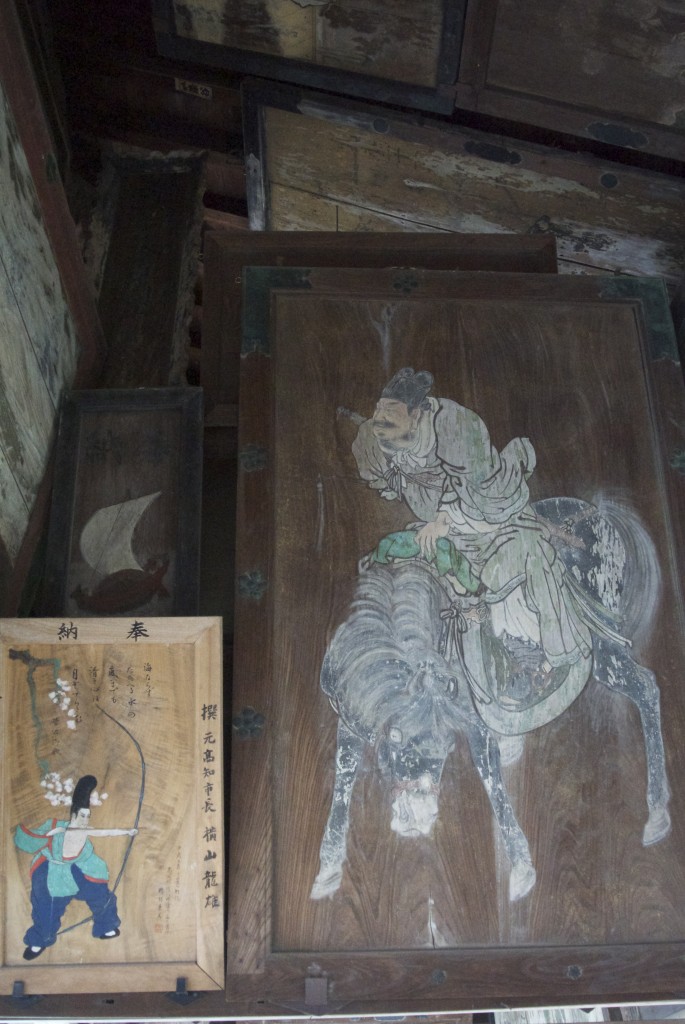
Pictures of horses used to be common, but ema in the past were by no means limited to that.
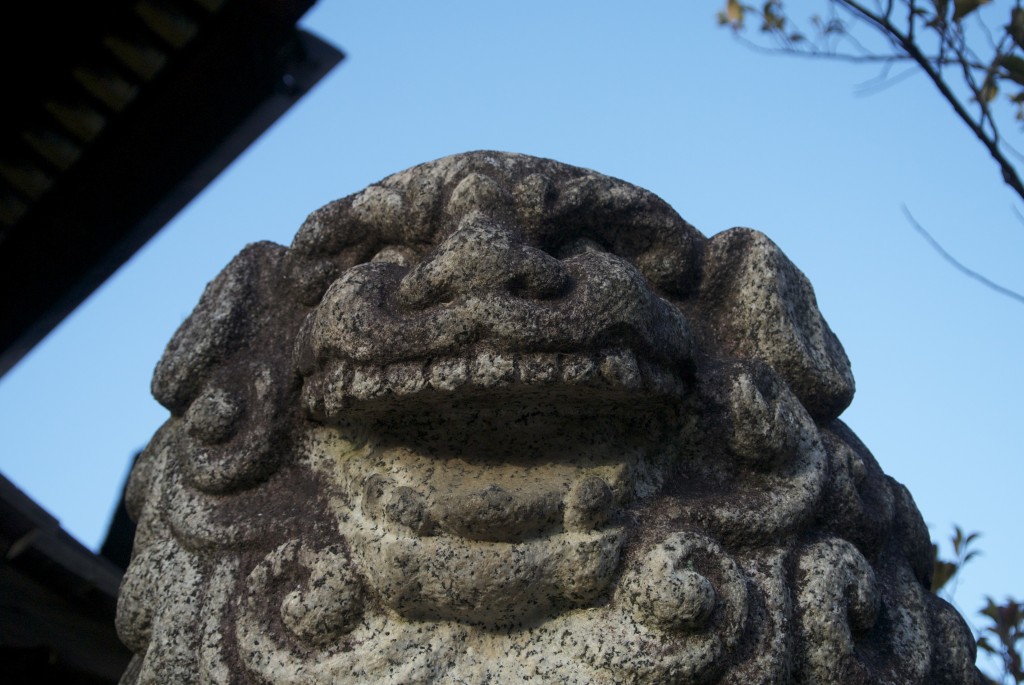
Komainu clearly enjoying the sunny spring weather and the crowds visiting the shrine at this time of year to see the plum blossom

Leave a Reply